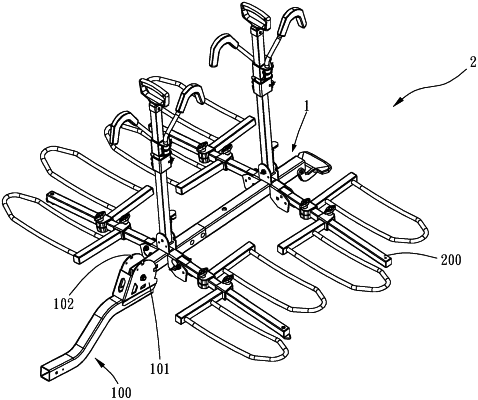| CPC B62H 3/12 (2013.01) [B62H 3/10 (2013.01); E05B 71/00 (2013.01)] | 9 Claims |

|
1. A swinging locking mechanism for a bicycle rack, the swinging locking mechanism being assembled with a base of a hanging member which is configured to be detachably connected to a hitch mechanism of a vehicle, the base including at least one first engaging portion, the swinging locking mechanism including:
a first rod member, configured to be movably assembled to the base;
a first connecting rod, movably disposed on the first rod member and including at least one second engaging portion releasably engaged with the at least one first engaging portion, the at least one second engaging portion being movable between a locking position and a release position;
a second rod member, non-swingably sleeved with the first rod member; a second connecting rod, movably disposed on the second rod member and detachably assembled with the first connecting rod; and
an operating member, connected with the second connecting rod;
wherein when the at least one second engaging portion is located in the locking position, the at least one second engaging portion and the at least one first engaging portion are engaged with each other, and the swinging locking mechanism is non-swingable relative to the base; when the operating member operates to drive the second connecting rod and the first connecting rod to move the at least one second engaging portion to be located in the release position, the at least one second engaging portion and the at least one first engaging portion are disengaged with each other, the swinging locking mechanism is swingable relative to the base;
wherein at least one pin is disposed on the first rod member, the at least one pin is disposed through the first rod member and the second rod member, the at least one pin extends to be within at least one guiding slot on the first connecting rod, and the at least one pin is slidable relative to the first connecting rod;
wherein the first connecting rod further includes a first member fixedly attached to the first rod member and a second member movable within the first rod member, and the at least one guiding slot is located on the second member.
|